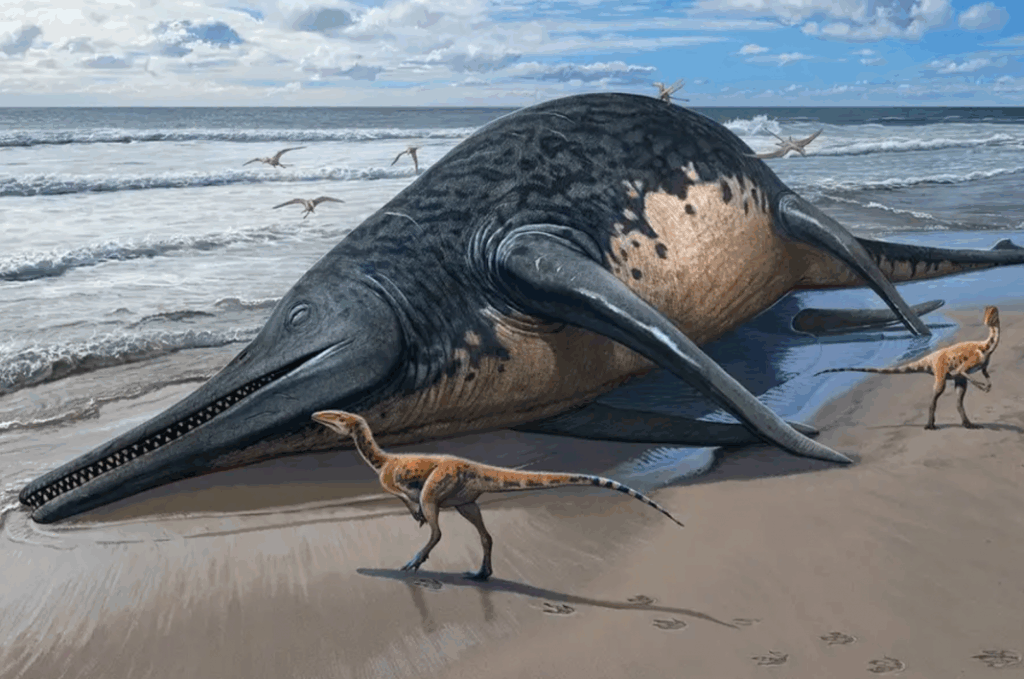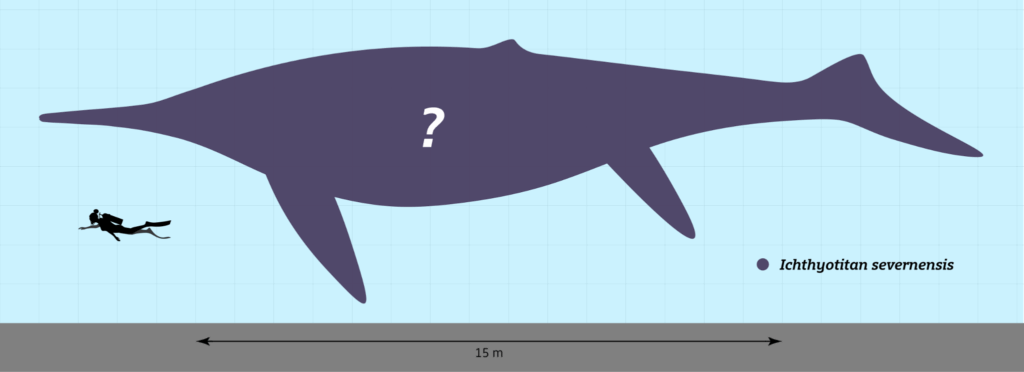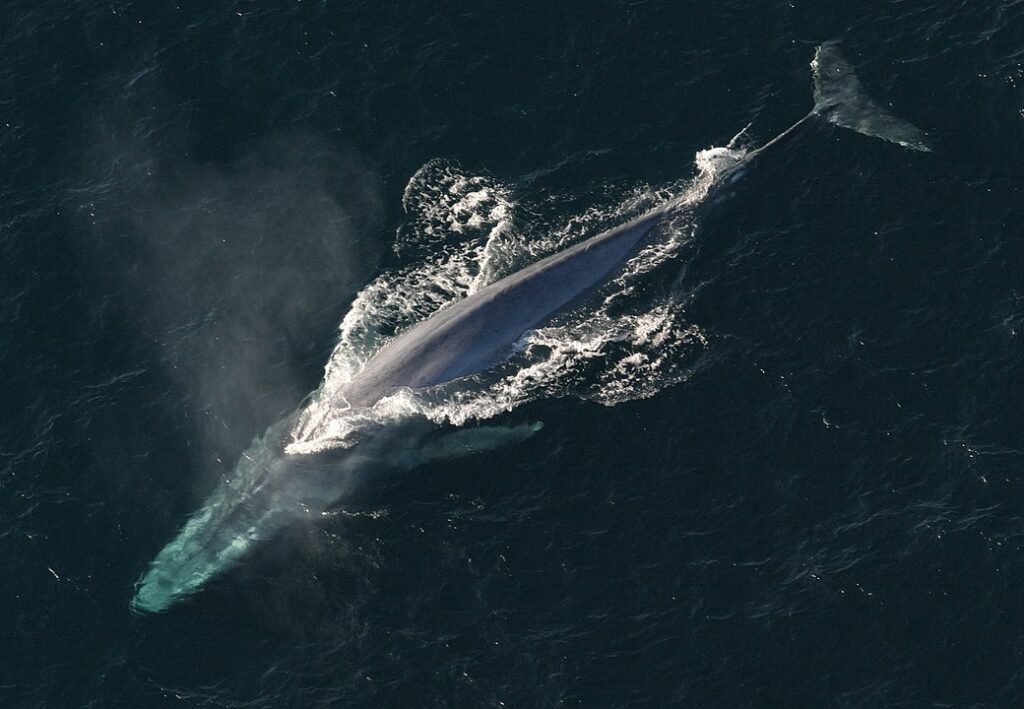
An Ichthyotitan that has met an unfortunate end.
While gigantism in animals has been a relatively common phenomenon throughout the geologic history of the Earth, as far as science can tell none have yet surpassed the size of Balaenoptera musculus, better known as the blue whale. This massive animal can reach sizes of up to 200 tons and up to 100 feet in length, however are more commonly found at around 100-120 tons and 70 feet. Regardless, the concept of the largest living animal ever existing in the modern day has captivated scientists, particularly paleontologists, as they race to try and discover an extinct animal that could rival the size of the blue whale.
One such case is that of the ichthyosaurs. With the name deriving from the Greek words for “fish” and “lizard”, early scientists discovered the remains of these ancient marine reptiles across the world, particularly in coastal southern United Kingdom, where they are still commonly found today. While many of these animals are the size of perhaps a dolphin, some could grow to enormous sizes, which brings us to the shastasaurids. These massive species, residing as a clade Shastasauridae within the greater ichthyosaur group, grew to enormous sizes, and were dominate throughout the Late Triassic over 225 million years ago. It is unclear why these massive animals died out, however the Triassic-Jurassic mass extinction, which gave dinosaurs the upper hand against other archosaurians for dominating the ecosystem, could be a culprit.
One animal in particular of interest is Ichthyotitan severnensis, whose genus name translates to “giant fish”. Current estimates place the animal at sizes of up to 82 feet in length, which would place it as one of the largest marine reptiles currently known to science. The holotype specimen was recovered from the Westbury Mudstone Formation in Somerset, England in 2020, and published in 2024 as a new genus of shastasaurid ichthyosaur. With such a huge size, speculations of its growth compared to a blue whale soon followed.

Estimated size of Ichthyotitan compared to a human. (https://en.wikipedia.org/wiki/Ichthyotitan#/media/File:Ichthyotitan_Size_Comparison.svg)
Sizing extinct animals, especially with weights, is always complicated. The skeleton of any species can only tell you so much about how the animal looked in the flesh, and many extinct animals are only known from a few fragments. Therefore, the most common way to get an estimate of size is for scientists to compare the anatomy of the fragments to other, better known specimens. Ichthyotitan is only known from a lower jaw bone, so this piece was scaled up based on more complete ichthyosaur specimens to get an idea of what its size COULD be. This immediately runs into a few issues. Every single ichthyosaur has been extinct for 66 million years, so we have no living animal with flesh and blood to compare them to. Additionally, mammals and reptiles have a very different physiology and make up, with marine mammals in particular being much heavier than ancient marine reptiles were on average. So while it is entirely possible that some individuals of Ichthyotitan were larger than the largest blue whale specimen ever recorded, short of observing them in the wild, we will never know for certain.
For now, the blue whale is and remains as the largest animal to ever roam the Earth, and until more fossils are discovered proving otherwise, it is a testament to the incredible diversity and success of mammal radiation following the Cretaceous-Paleogene extinction.

A blue whale in all its glory. Majestic. (https://en.wikipedia.org/wiki/Blue_whale#/media/File:Anim1754_-_Flickr_-_NOAA_Photo_Library.jpg)
Sources
Lomax, D. R., De la Salle, P., Massare, J. A., & Gallois, R. (2018). A giant Late Triassic ichthyosaur from the UK and a reinterpretation of the Aust Cliff ‘dinosaurian’bones. PLoS One, 13(4), e0194742.
Lomax, D. R., de la Salle, P., Perillo, M., Reynolds, J., Reynolds, R., & Waldron, J. F. (2024). The last giants: New evidence for giant Late Triassic (Rhaetian) ichthyosaurs from the UK. Plos one, 19(4), e0300289.
Sears, R., & Perrin, W. F. (2009). Blue whale: Balaenoptera musculus. In Encyclopedia of marine mammals (pp. 120-124). Academic Press.